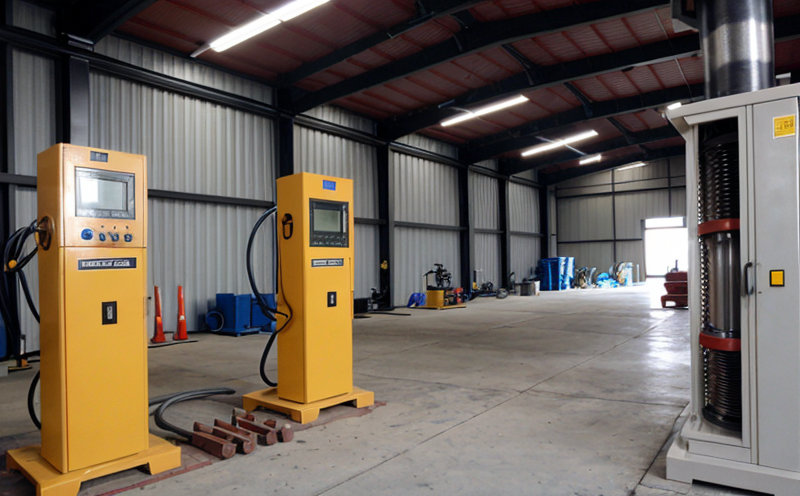ISO 13355-2 Mechanical Vibration Resistance
The ISO 13355-2 standard outlines procedures to assess the mechanical strength and vibration resistance of packaging systems. This testing is crucial for ensuring that packaged products can withstand environmental stresses, such as shipping vibrations, without compromising their integrity or safety.
Understanding the importance of this test in various sectors, particularly manufacturing and logistics, highlights its significance. Packaging plays a critical role in protecting goods during transportation and storage. Mechanical vibration resistance tests are essential because they help identify any potential weaknesses in packaging that could lead to product damage, which can result in significant financial losses.
The testing process involves subjecting the packaged unit to controlled mechanical vibrations while monitoring for deformation or failure. The standard specifies detailed procedures on how to set up the test environment and interpret results accurately. Compliance with ISO 13355-2 ensures that packaging meets industry standards, thereby enhancing product safety and reliability.
For R&D engineers involved in developing new packaging solutions, understanding this standard can provide insights into optimizing design parameters for better performance under real-world conditions. Quality managers responsible for ensuring consistent quality across production batches will find value in knowing how to implement these tests effectively within their operations.
The ISO 13355-2 test method is widely recognized and accepted by regulatory bodies worldwide, making it a reliable choice for companies seeking third-party validation of their packaging systems' resilience against mechanical vibrations. This adds credibility to products being sold internationally or required by specific industry standards.
Given its relevance across multiple industries—from electronics manufacturing to pharmaceuticals—compliance with ISO 13355-2 is not only beneficial but also necessary for maintaining a competitive edge in today's global market.
Why It Matters
- Safeguards against product damage during transportation and storage
- Improves overall quality assurance by identifying potential weaknesses early
- Enhances consumer trust through consistent performance of products in transit
- Meets regulatory requirements for safe handling and transport of goods internationally
- Reduces risk of recalls due to packaging failures, saving time and money on rework or replacements
The importance of mechanical vibration resistance testing cannot be overstated. It is a critical step in ensuring that the packaging designed to protect products during transit actually does so effectively. By adhering to industry standards like ISO 13355-2, companies can demonstrate their commitment to quality and customer satisfaction.
Quality and Reliability Assurance
- Preparation of specimens: The packaging units must be carefully prepared according to the guidelines provided in the standard. This includes ensuring that all components are properly assembled before testing begins.
- Instrumentation setup: Specialized vibration testing machines capable of generating controlled vibrations within specified frequency ranges are used for this test. Calibration and validation of these machines are crucial steps prior to conducting tests.
- Data collection: During the test, various parameters such as peak acceleration levels, duration of exposure, and any observable changes in packaging structure are recorded. These data points form the basis for evaluating whether the packaging meets the required specifications outlined by ISO 13355-2.
| Parameter | Description | Acceptance Criteria (ISO 13355-2) |
|---|---|---|
| Peak Acceleration Level | The maximum acceleration experienced by the packaged unit during testing. | < X g, where X is specified in the standard based on packaging type and product sensitivity. |
| Durability Time | The length of time the packaged unit is subjected to continuous vibration. | Dependent on the package category; typically ranges from 10 minutes to several hours. |
| Observable Changes | Any visible signs of damage or deformation in the packaging structure after testing. | No observable changes beyond those expected due to normal wear and tear. |
The use of advanced instrumentation allows for precise measurement and analysis, ensuring accurate assessment of mechanical properties. Compliance with these acceptance criteria demonstrates adherence to best practices established by leading organizations in the field.
Use Cases and Application Examples
- Electronics Manufacturing: Ensuring that fragile electronic components within packages are not damaged during shipment.
- Pharmaceutical Industry: Protecting sensitive medications from degradation caused by physical stress.
- Fashion Apparel: Maintaining fabric integrity and preventing tearing or stretching under typical transport conditions.
- Consumer Goods: Guaranteeing that everyday items like bottles, jars, and boxes remain intact throughout their journey to the consumer.
| Use Case | Description | Outcome |
|---|---|---|
| Vibrational Testing of Shipping Containers | Evaluating the structural integrity of large containers used for international shipping. | Demonstrates ability to withstand harsh environmental conditions without compromising contents. |
| Testing Packaging of Fragile Glassware Products | Ensuring that glass items like vials or jars remain undamaged during transit. | Increases customer confidence in product quality and durability. |
These examples illustrate how ISO 13355-2 testing is applied across different sectors. Each application serves to enhance the reliability of packaging, ultimately benefiting both manufacturers and consumers alike.





